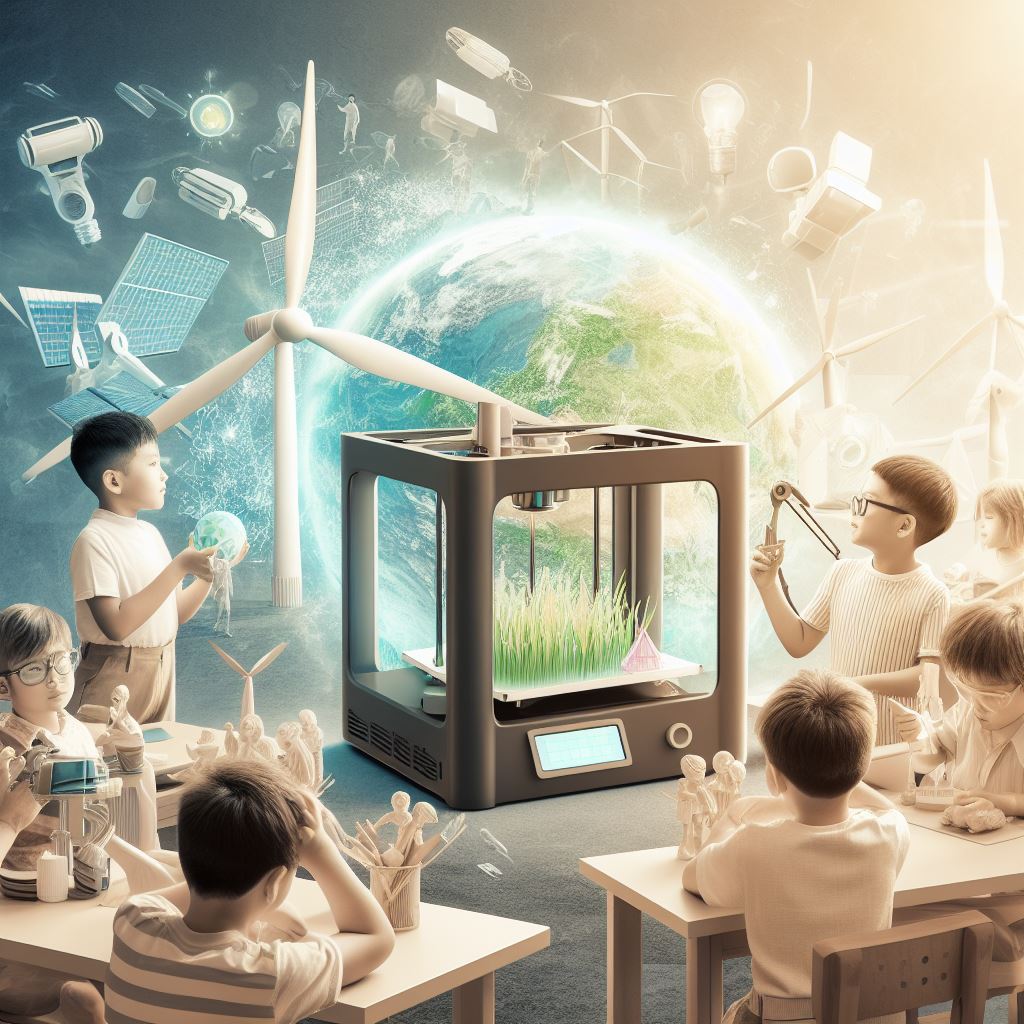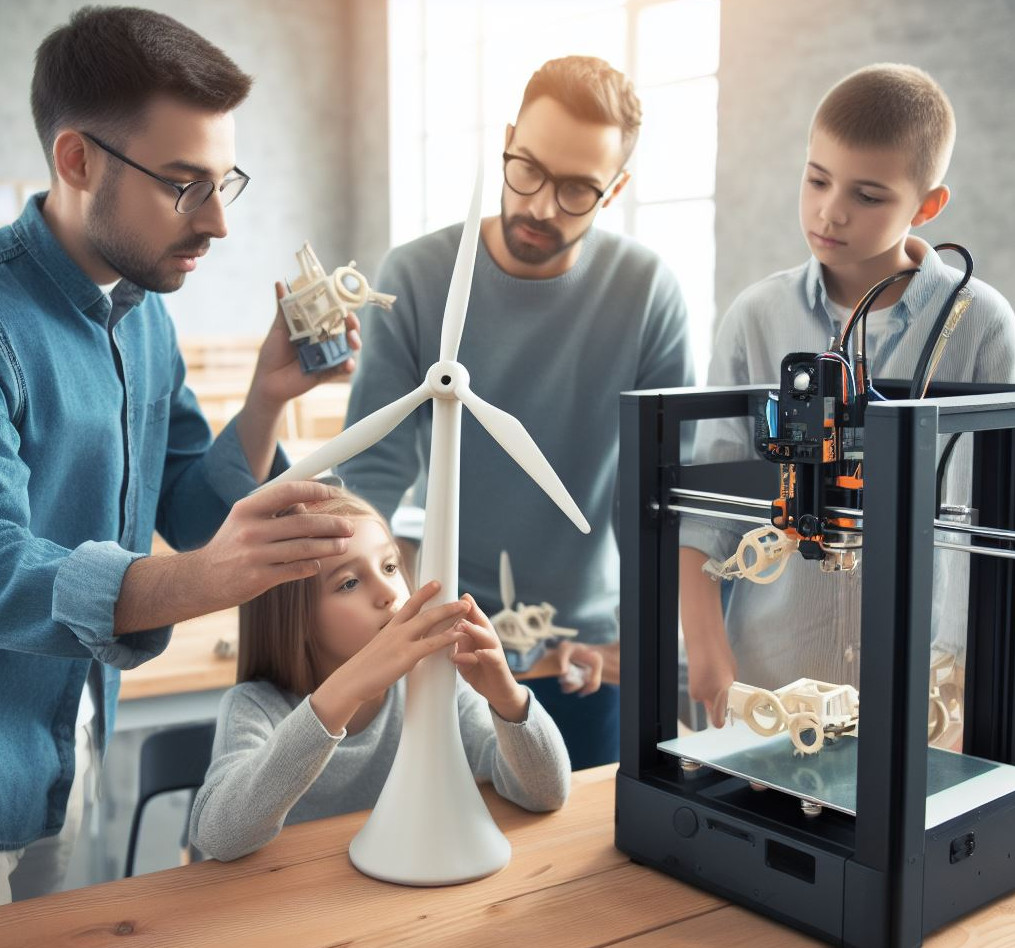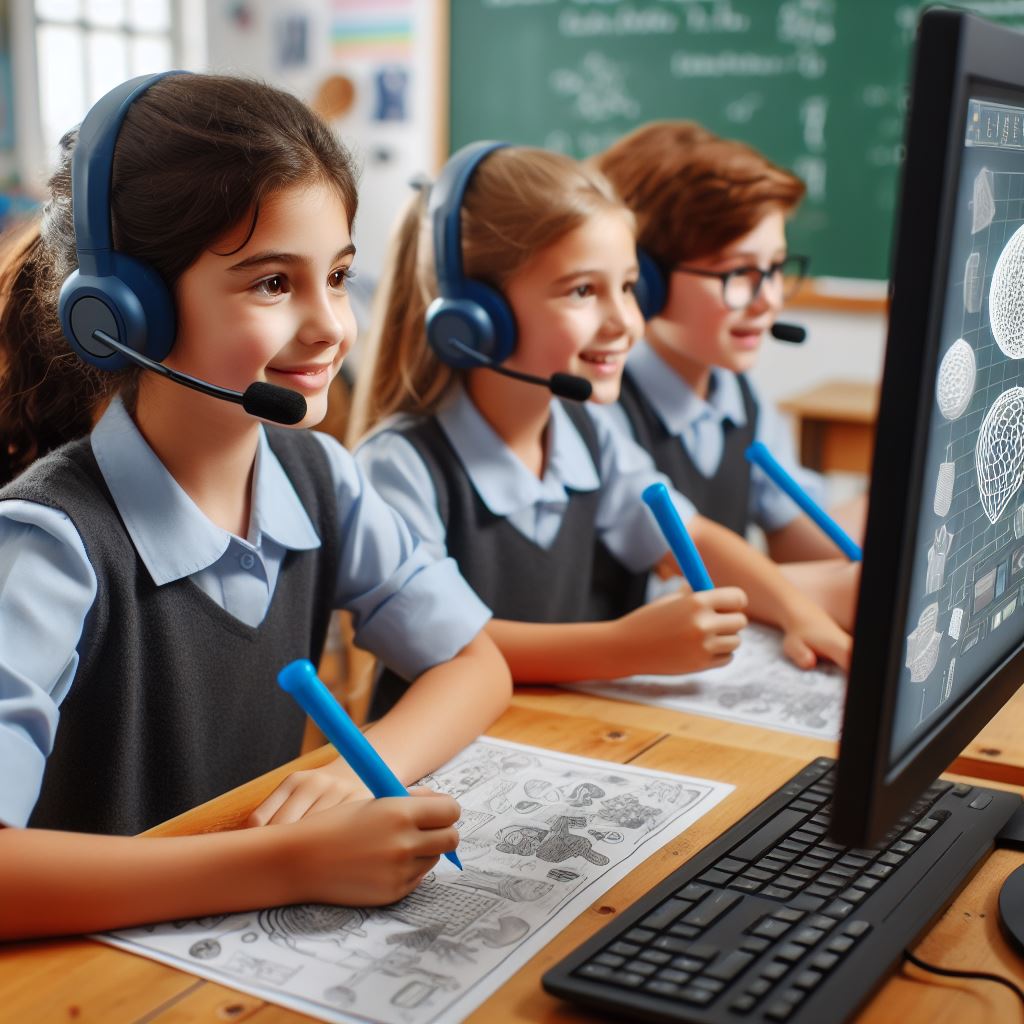
Introduction
The 21st century has brought a wave of technological advancements and the field of education is no exception. One of these innovations, the 3D printer, has proved to be a revolutionary tool with the potential to transform the way we teach and learn. This essay aims to convince the reader of the immense benefits that 3D printers offer in nurturing young minds, particularly in fostering a generation of engineers equipped to tackle the climate crisis.
Encouraging Creativity and Critical Thinking
One of the most significant benefits of integrating 3D printers into education is the stimulation of creativity and critical thinking. With 3D printers, students can transform their abstract ideas into tangible objects. This process requires not only creativity in design but also critical thinking in problem-solving. For example, if a student’s initial design does not print as expected, they must identify the problem, consider possible solutions, and then implement their chosen solution. This iterative process mirrors the engineering design process, thus providing young students with early exposure to engineering thinking.
Hands-On Learning Experience
3D printers offer a hands-on learning experience that traditional teaching methods often lack. Students do not merely learn about concepts, they can actually create physical objects that embody these concepts. This hands-on approach makes learning more engaging and memorable, thus improving knowledge retention. Moreover, it gives students a sense of accomplishment and boosts their confidence in their abilities. This confidence is crucial in nurturing future engineers who are self-assured in their skills and ready to tackle complex challenges.
Cultivating Engineering and Design Skills
By enabling students to design and create their own 3D models, 3D printers help cultivate key engineering and design skills. Students learn to use computer-aided design (CAD) software, which is an essential tool for modern engineers. They also learn about various engineering concepts, such as the structural integrity of different shapes and the properties of different materials. Moreover, they learn to consider practical constraints, such as the cost and time required to print their designs. These skills and knowledge are fundamental for future engineers.
Promoting Collaboration and Teamwork
3D printing projects often involve students working in teams. This fosters collaboration and teamwork, skills that are vital in the engineering profession. Students learn to share ideas, distribute tasks, and resolve conflicts, all while working towards a common goal. This not only prepares them for the collaborative nature of engineering work but also helps them develop interpersonal skills that are valuable in all areas of life.
Fostering Environmental Consciousness
Perhaps the most pertinent reason to introduce 3D printers in education is their potential to foster environmental consciousness. 3D printers can use recycled materials, thus teaching students about waste management and the circular economy. Moreover, 3D printing can be more energy-efficient and produce less waste than traditional manufacturing methods, thus highlighting the importance of sustainable technologies. By learning about these environmental benefits, students can become more aware of the environmental impact of human activities and more passionate about pursuing sustainable solutions. This is exactly the kind of mindset that we need in our future engineers to help solve the climate crisis.

Artificial Intelligence: A game changer in Education and Environmental stewardship
Artificial Intelligence (AI) is another powerful tool that can revolutionize education and enhance environmental stewardship among the younger generation. AI has the potential to transform the traditional approach to education by creating personalized learning environments that adapt to each student’s unique needs and pace of learning. It can provide real-time feedback, identify learning gaps, and offer tailored solutions, thereby helping students to learn more effectively and efficiently.
Moreover, AI can be used to develop interactive and immersive learning experiences that make complex subjects more engaging and understandable. For instance, AI-powered virtual reality can be used to visualize scientific concepts, such as the impact of climate change on the planet, in a more tangible and relatable way. This can foster a deeper understanding and appreciation of the environment among students.
Artificial Intelligence and Environmental Education
Furthermore, AI can play a vital role in teaching students about environmental sustainability. AI-powered tools can analyze and predict environmental trends, such as changes in climate patterns or biodiversity loss, with greater accuracy. This can be used to educate students about the serious implications of these trends and the urgent need for sustainable solutions.
AI can also empower students to take part in environmental conservation efforts. For example, AI-powered apps can help students identify and track local flora and fauna, contributing to citizen science initiatives. By actively participating in these efforts, students can gain a sense of responsibility and ownership towards the environment.
Artificial Intelligence: Augmenting 3D Printing for Sustainable Engineering
When used in conjunction with 3D printing, AI can further enhance the learning experience for aspiring engineers. AI can improve the design and manufacturing process of 3D printing by optimizing designs for minimal material use and maximum functionality. This can teach students about the principles of sustainable engineering, such as waste reduction and resource efficiency.
Moreover, AI can be used to develop more eco-friendly materials for 3D printing. This can expose students to the cutting-edge research and innovation in sustainable materials, inspiring them to pursue careers in this field.
Natural language processing in 3D modeling process
Now let’s discus the challenges and possible transformations of 3D Modeling Education through AI-Driven Text-to-3D Technology
3D modeling, using software like Blender or CAD, has been a challenging task for many students. This can be attributed to the meticulous detail and time commitment required to create a well-reproduced, dimensionally accurate model.
It often demands long hours of concentrated effort, a steep learning curve, and an in-depth understanding of spatial reasoning. This complexity can make it difficult for novice learners to grasp and implement, often leading to frustration and decreased interest in the subject.
However, the recent advancement in AI and machine learning has introduced a promising alternative – the Text-to-3D object technology.
This technology utilizes specialized trained neural networks that can transform written descriptions into 3D models.

It simplifies the process of 3D modeling by replacing the need for intricate manipulations with natural language commands, making it more accessible for students with varying skill levels.
The integration of this technology into education can revolutionize the teaching and learning process. It fosters an environment where students can focus on conceptual understanding and creative expression, rather than struggling with the technical aspects of 3D software. Moreover, it aligns with the trend towards digitalization and adoption of Invenio in classrooms, facilitating sustainable education.
Despite its potential, Text-to-3D technology is not without its drawbacks.
There might be limitations in the level of detail and precision achievable as compared to traditional 3D modeling software. Also, the technology might require substantial computational resources and may not yet be optimized for all GPU hardware.
Furthermore, the lack of hands-on experience with traditional 3D modeling might affect the students’ understanding of spatial relationships and geometric principles.
In conclusion, while the Text-to-3D technology presents an exciting advancement in 3D modeling education, it should be implemented in a balanced way, supplementing, not replacing the traditional methods. This approach will enable students to leverage the benefits of both technologies, enhancing their overall learning experience.
Conclusion
In conclusion, 3D printers offer a wealth of benefits for young students’ development and have the potential to educate a generation of engineers equipped to tackle the climate crisis. They encourage creativity and critical thinking, provide a hands-on learning experience, cultivate key engineering and design skills, promote collaboration and teamwork, and foster environmental consciousness. By integrating 3D printers into educational curricula, we can nurture young minds who are not only proficient in engineering but also passionate about sustainability.
This could be the key to addressing the pressing environmental challenges that our planet faces.
Moreover, integrating new technologies like AI and 3D printing into education can be a powerful strategy to prepare the younger generation for the future and instill in them a deep commitment to environmental sustainability. By leveraging these technologies, we can nurture a generation of engineers who are not only skilled but also passionate about saving the planet and solving the climate crisis.
The Invenio community is poised to play a pivotal role in the development and refinement of the Text-to-3D technology that leverages the power of specialized, trained neural networks. This groundbreaking technology has the potential to revolutionize the field of 3D modeling by transforming written descriptions into accurate 3D models, thus simplifying the process significantly. The introduction of this technology in the educational sector would be particularly impactful, particularly for young students. It could make learning more engaging and exciting, fostering an understanding of 3D processing fundamentals in a fun, interactive manner.
This not only simplifies the learning process but also introduces a much-needed element of excitement, making it a vital tool in shaping the future of education.






